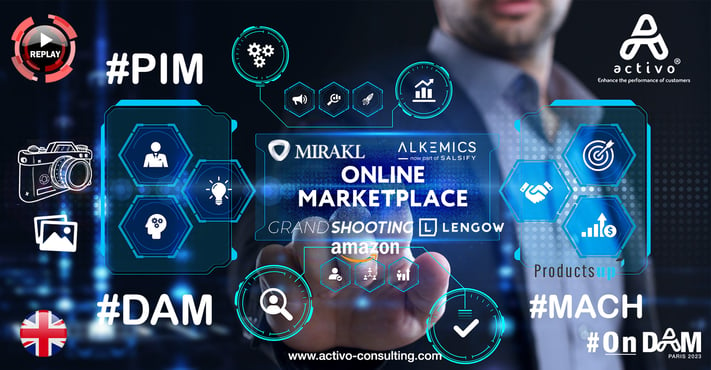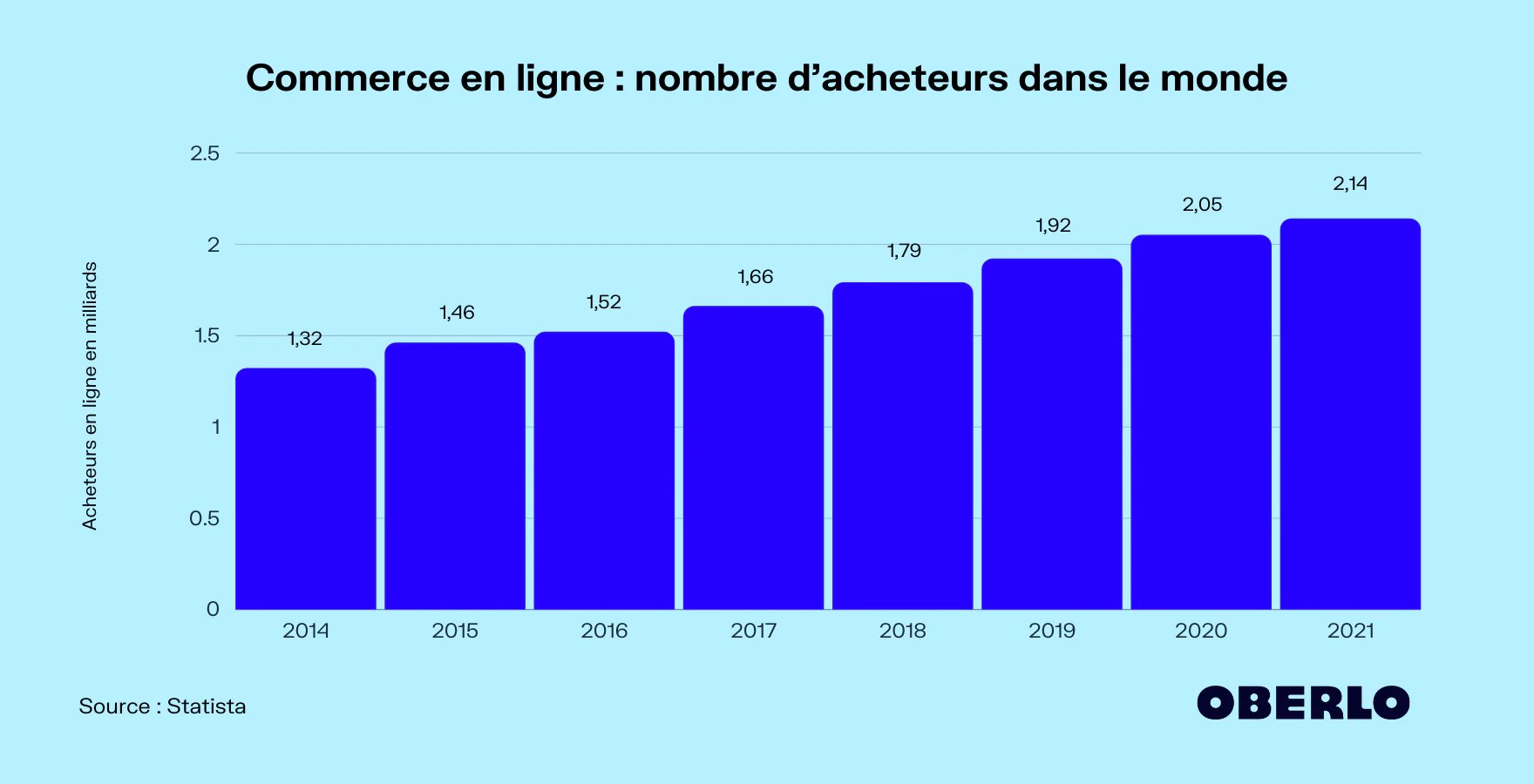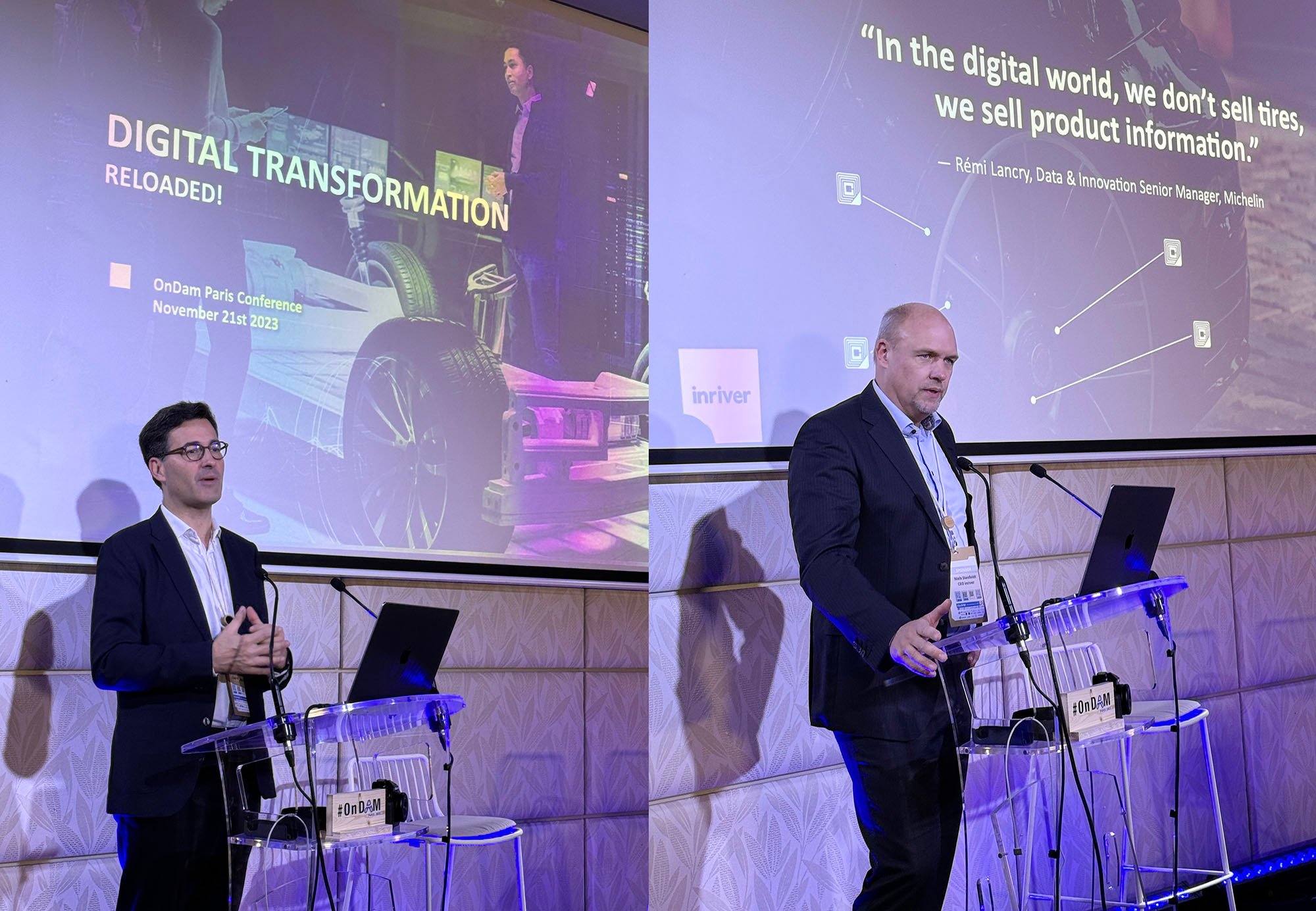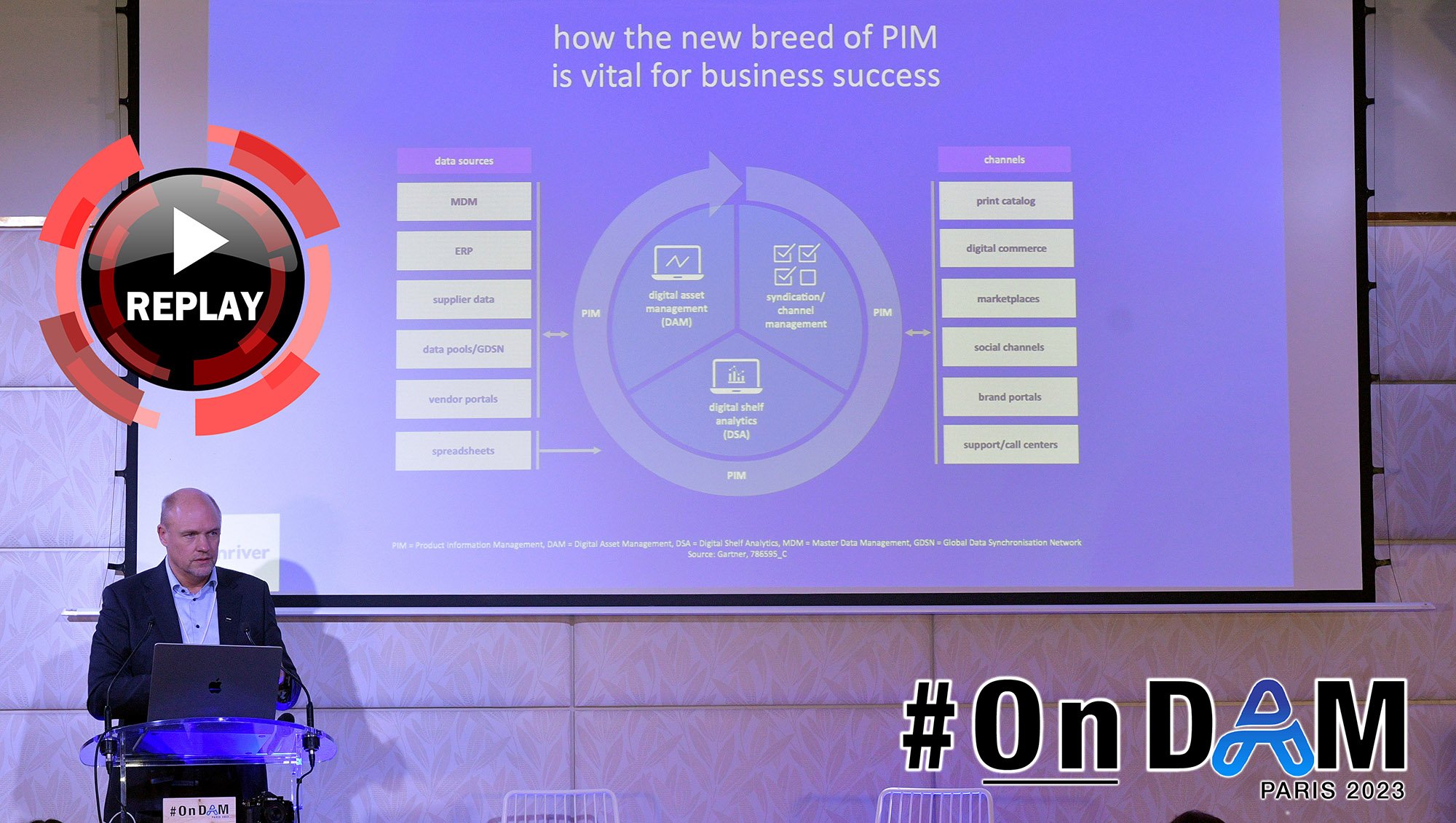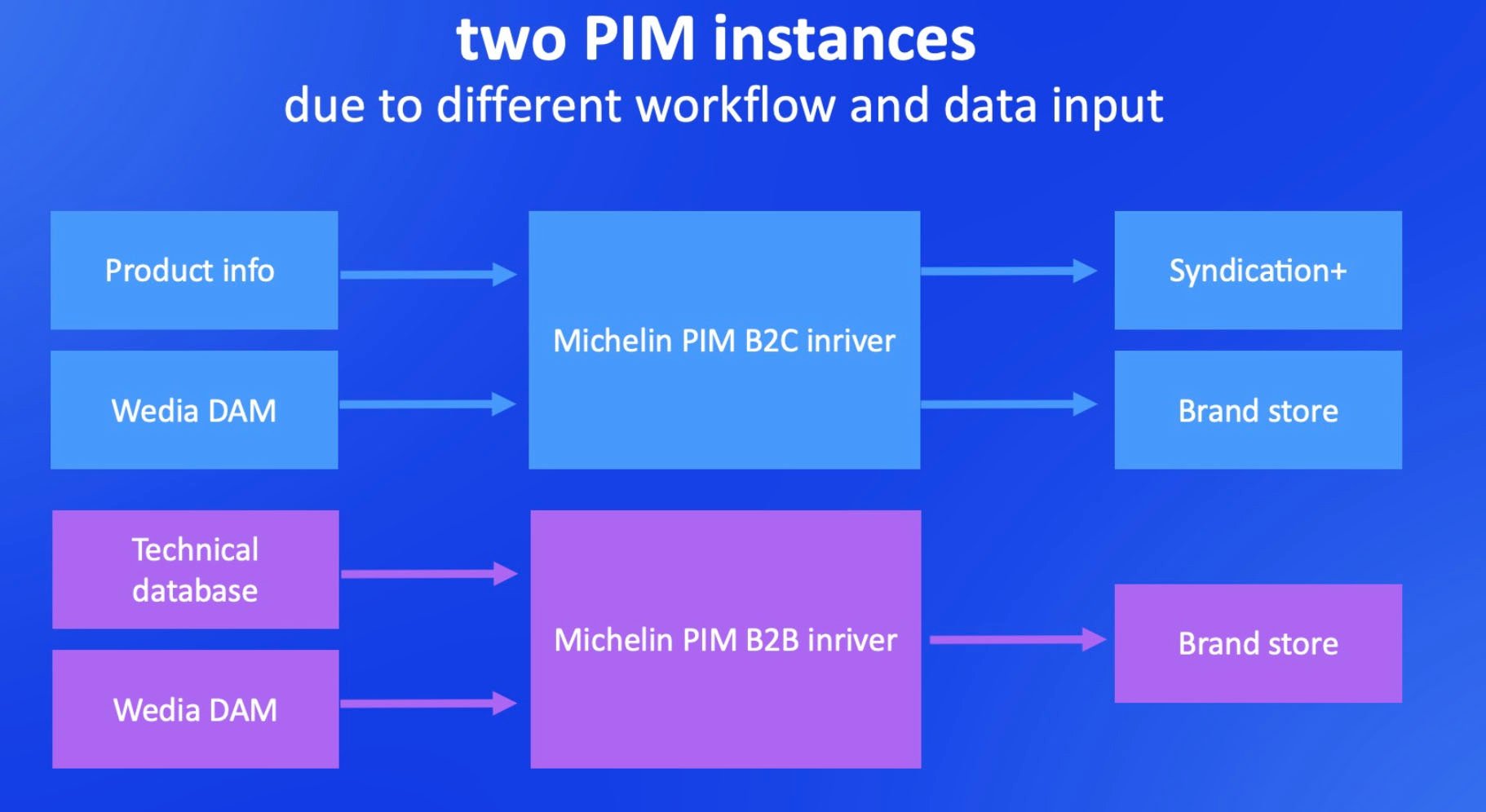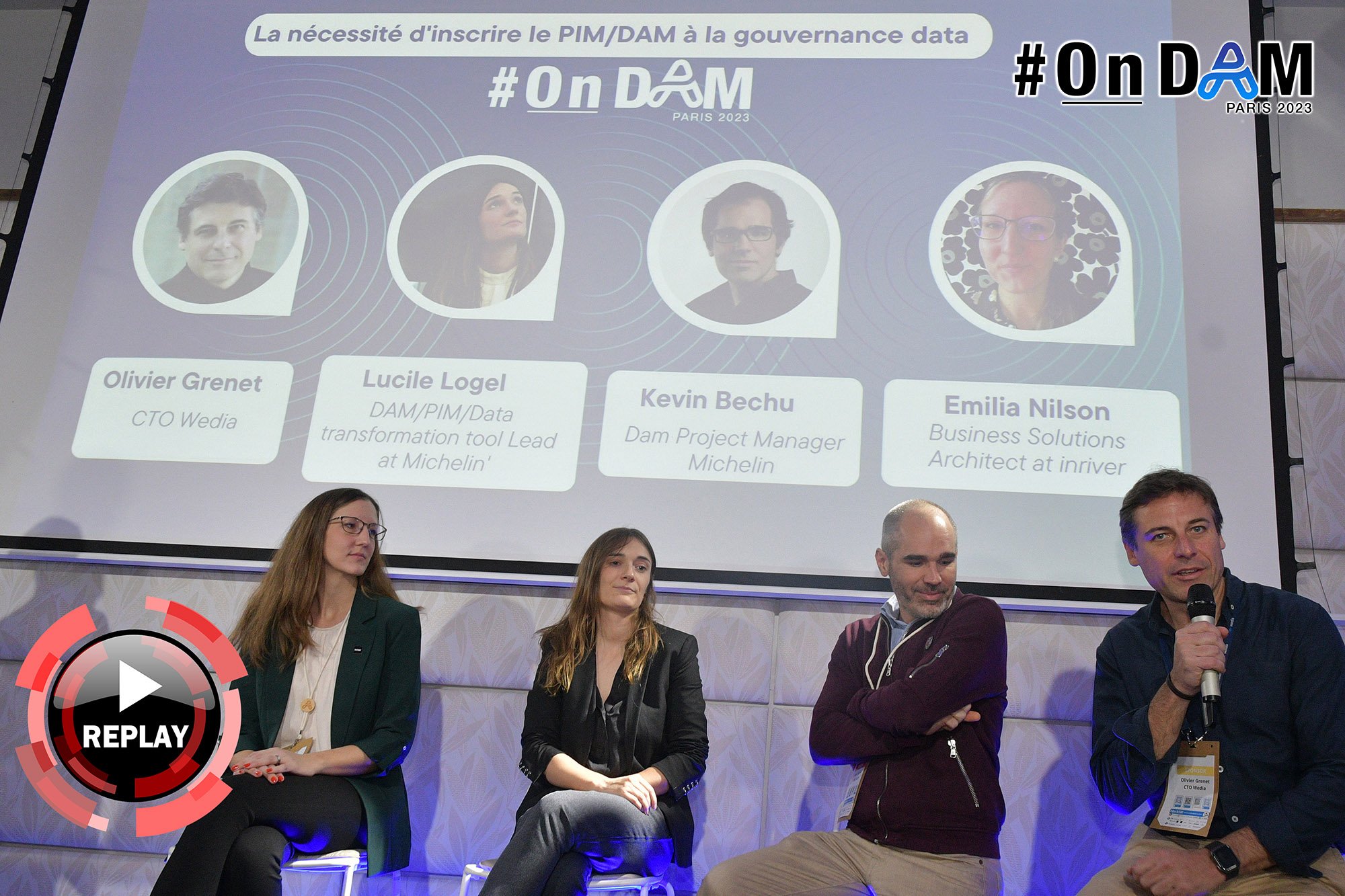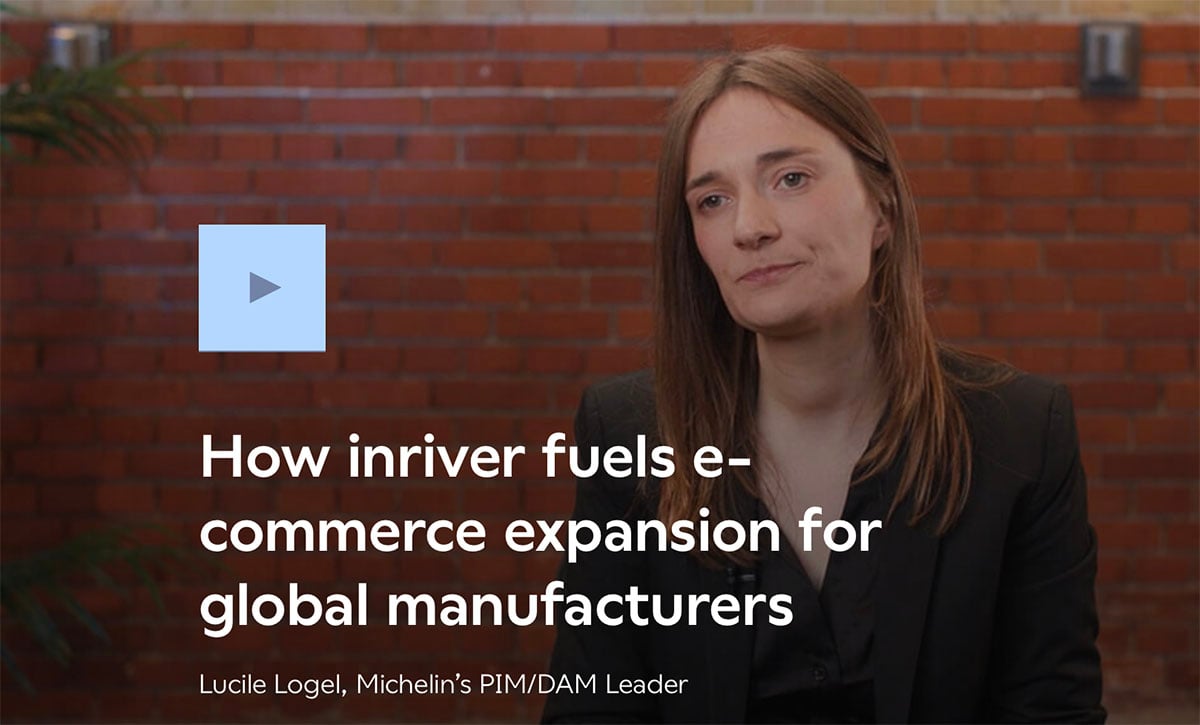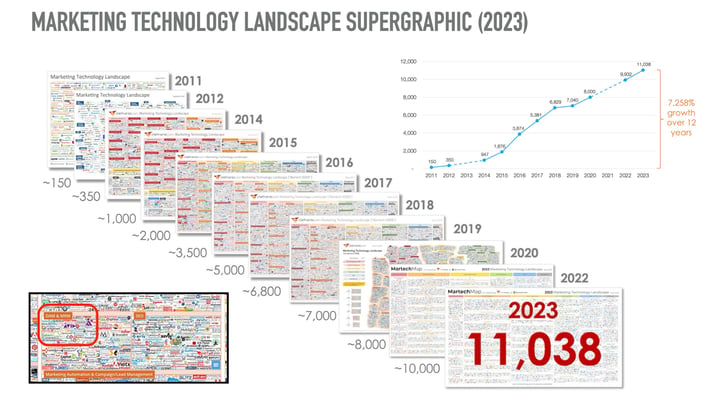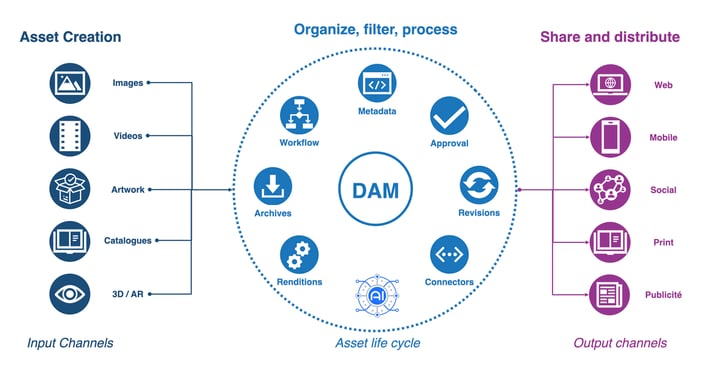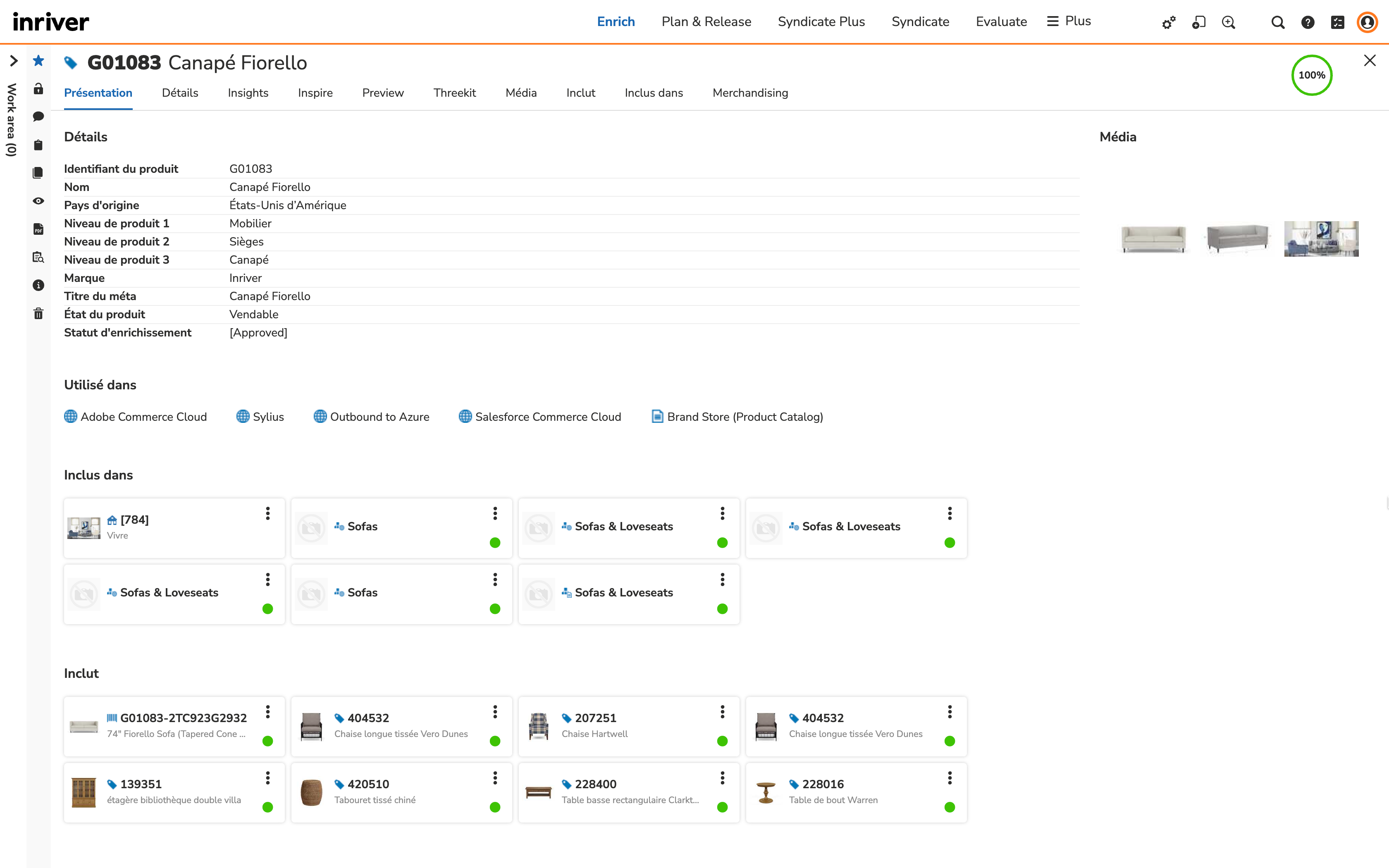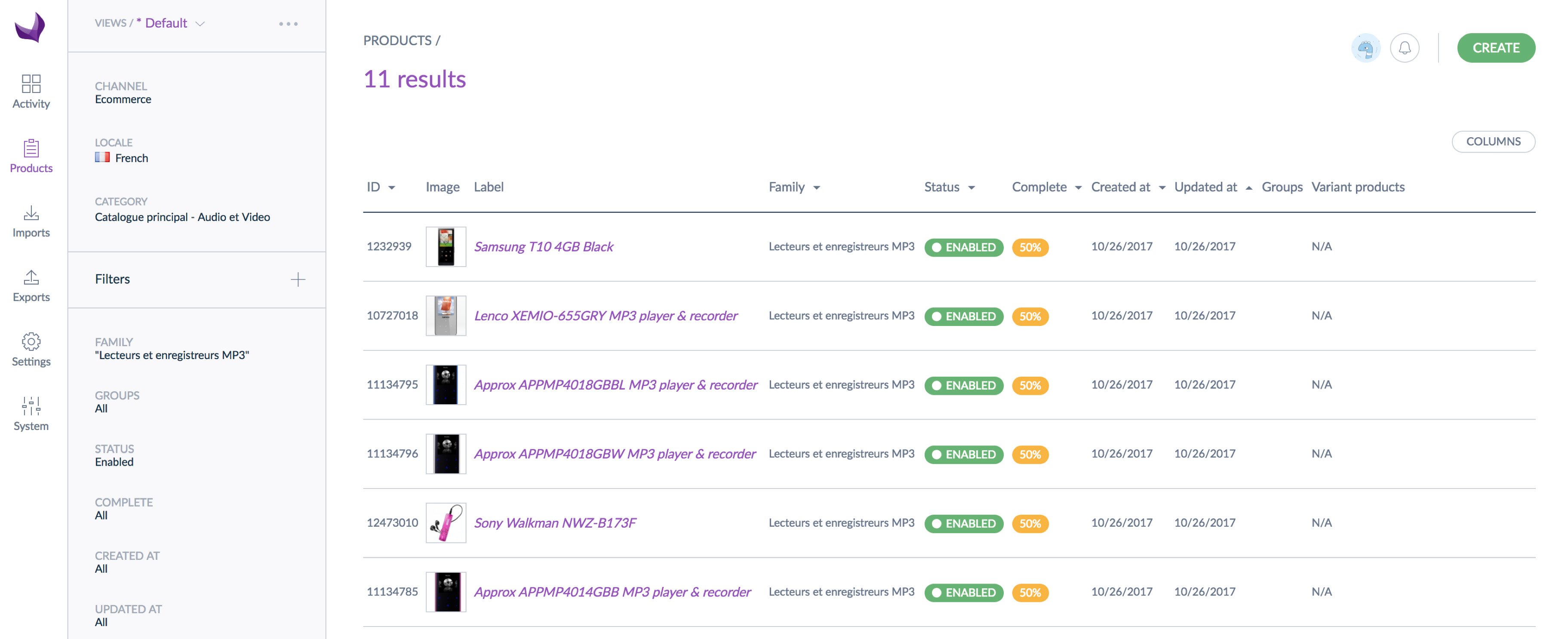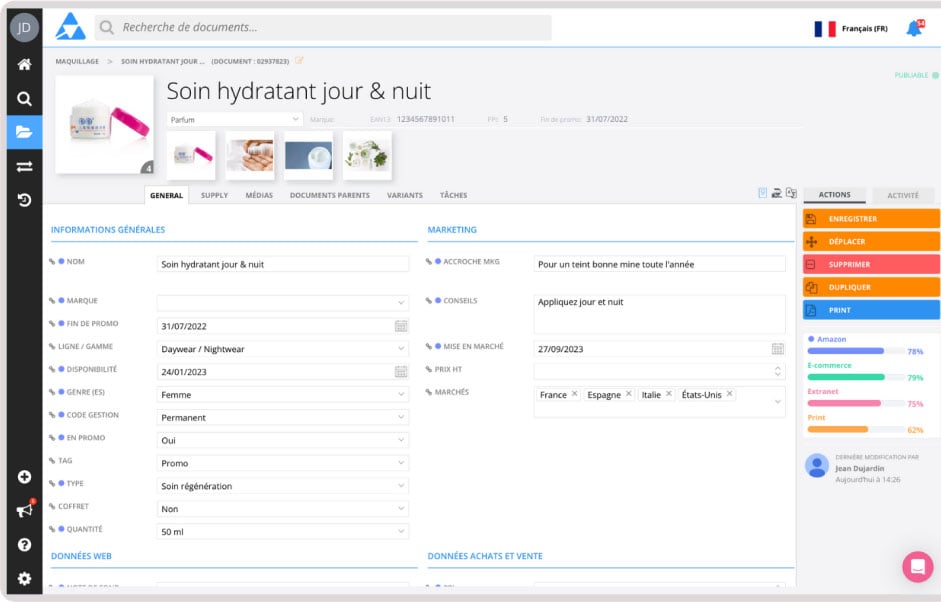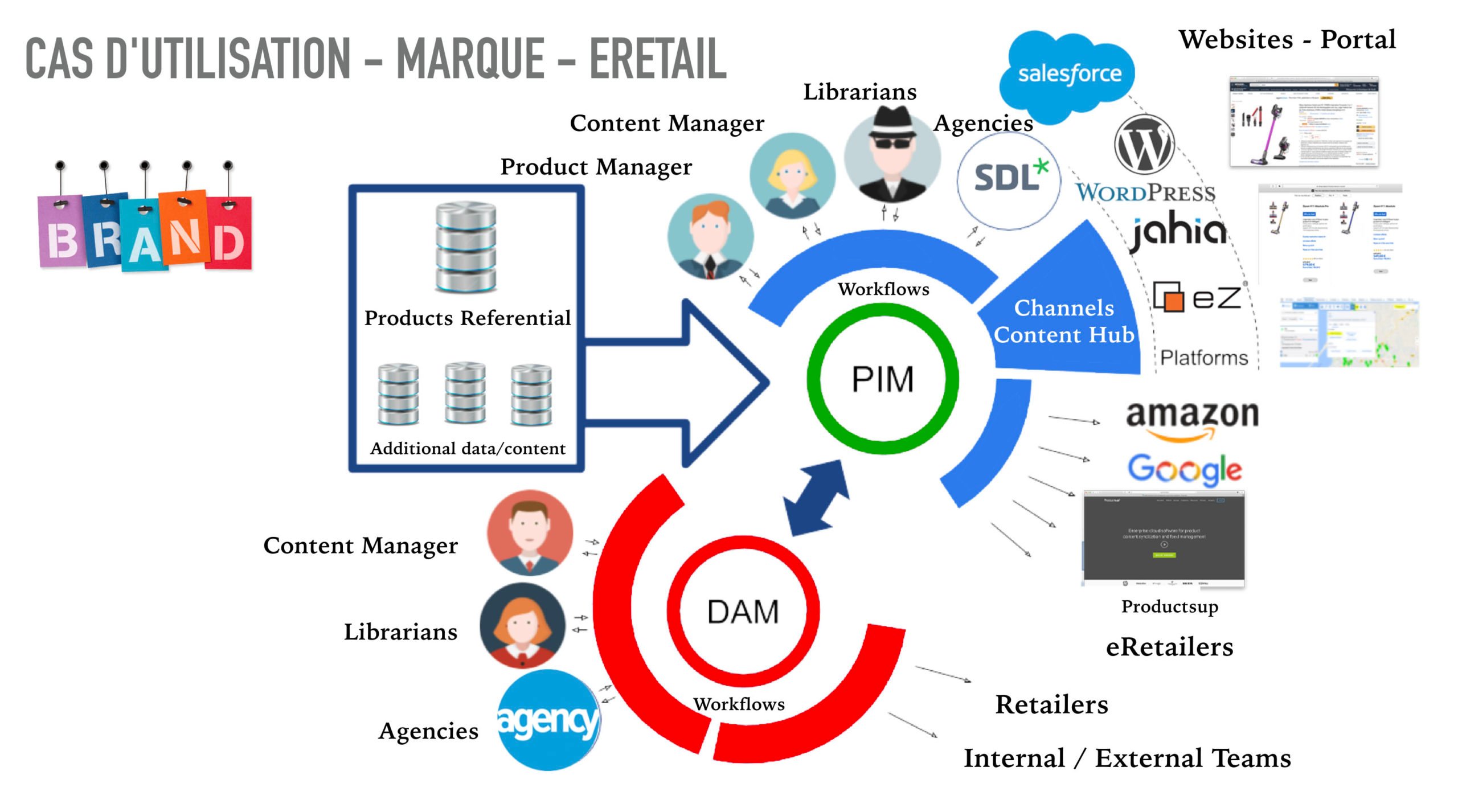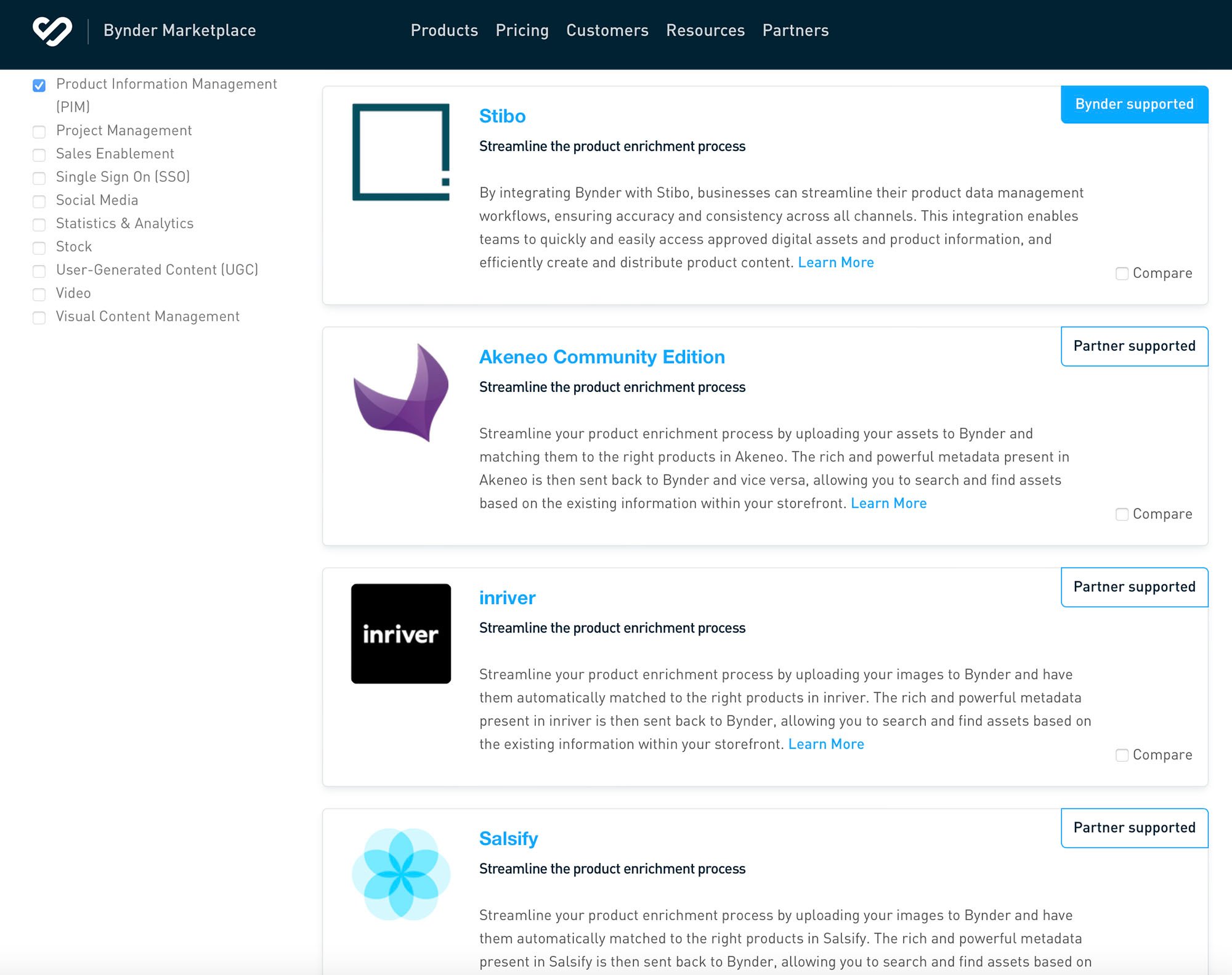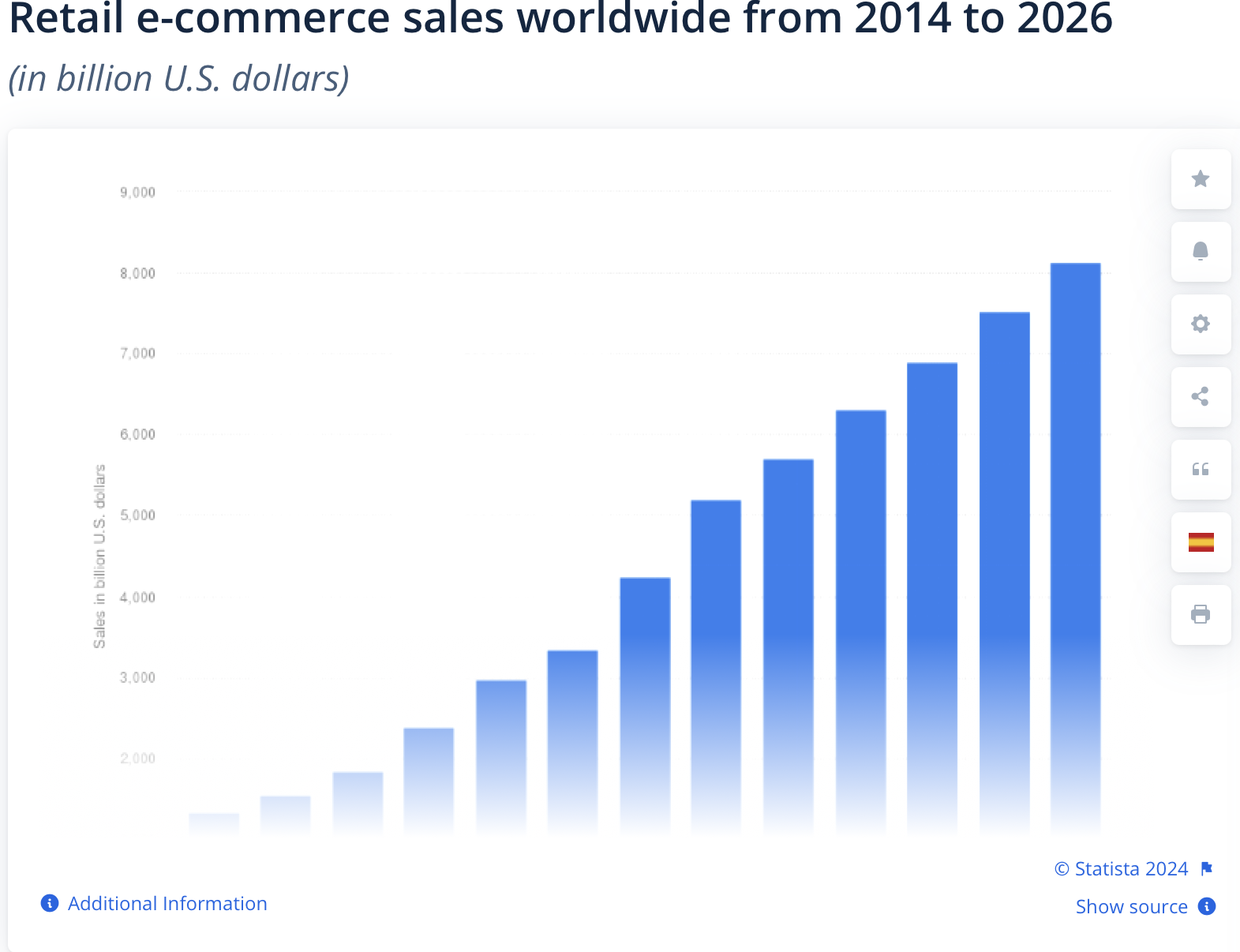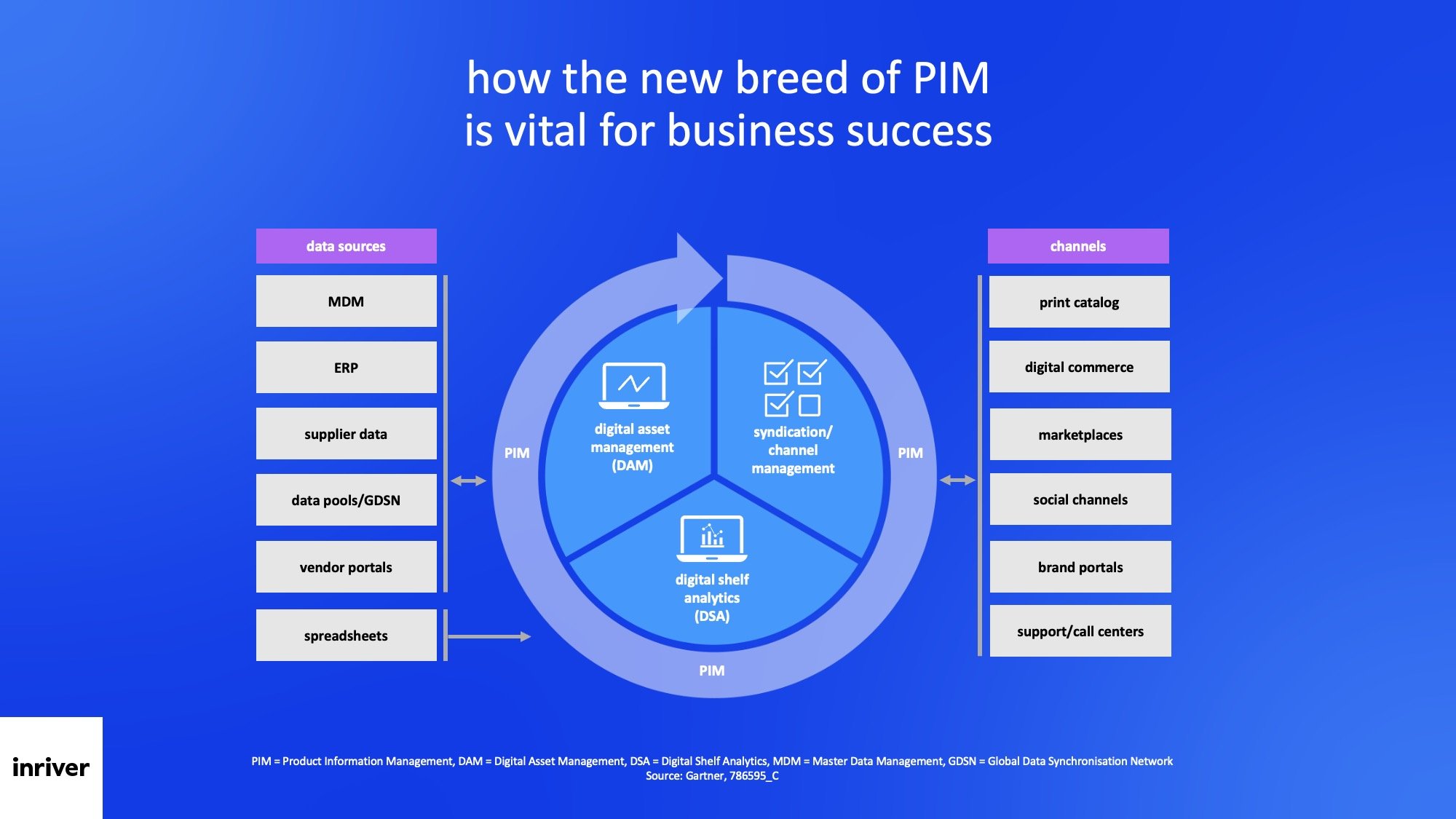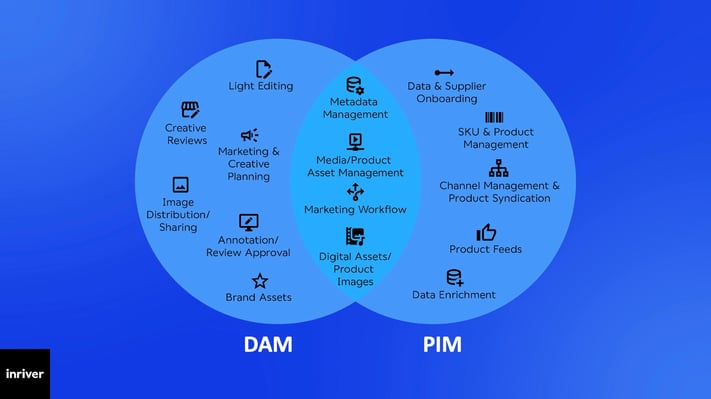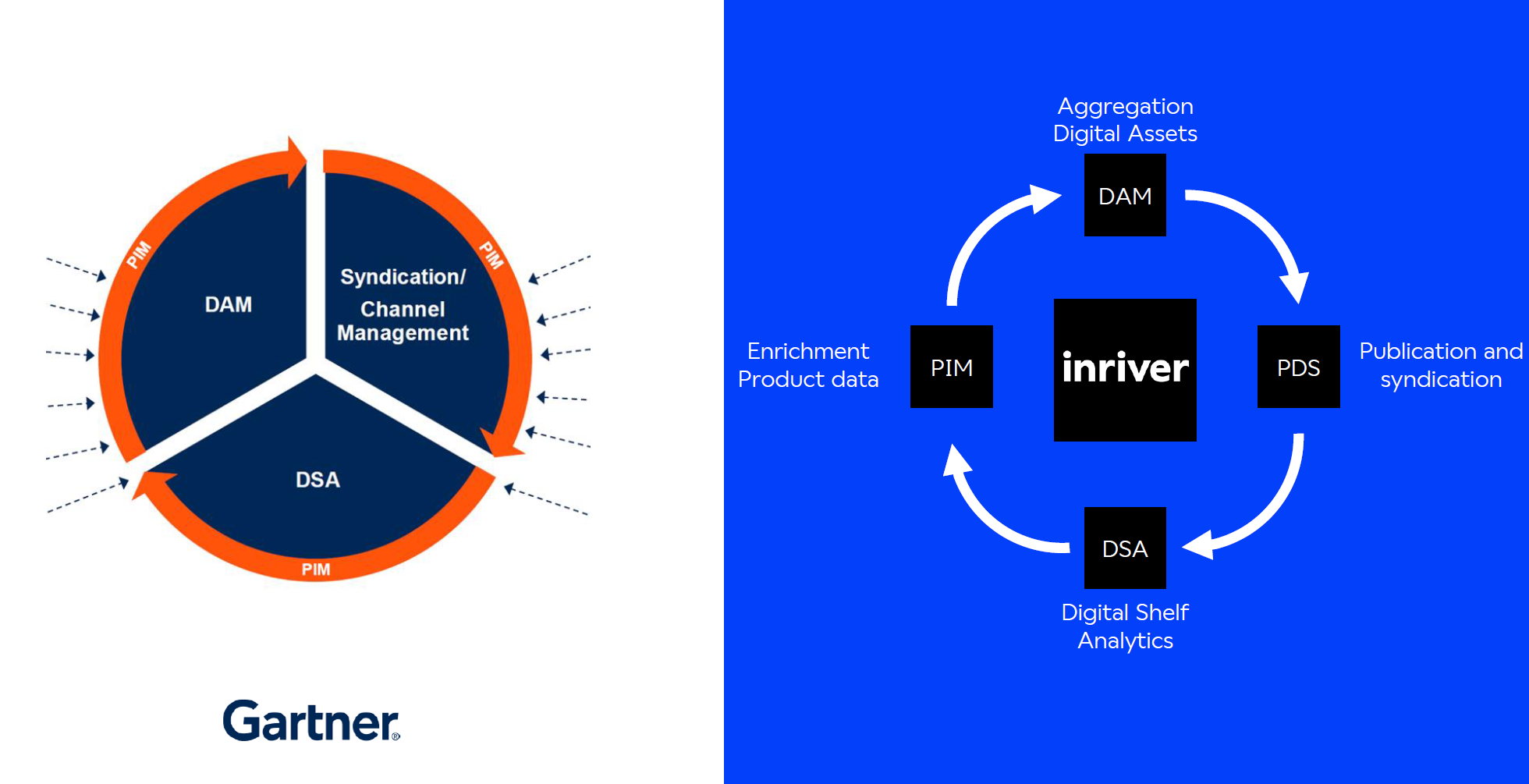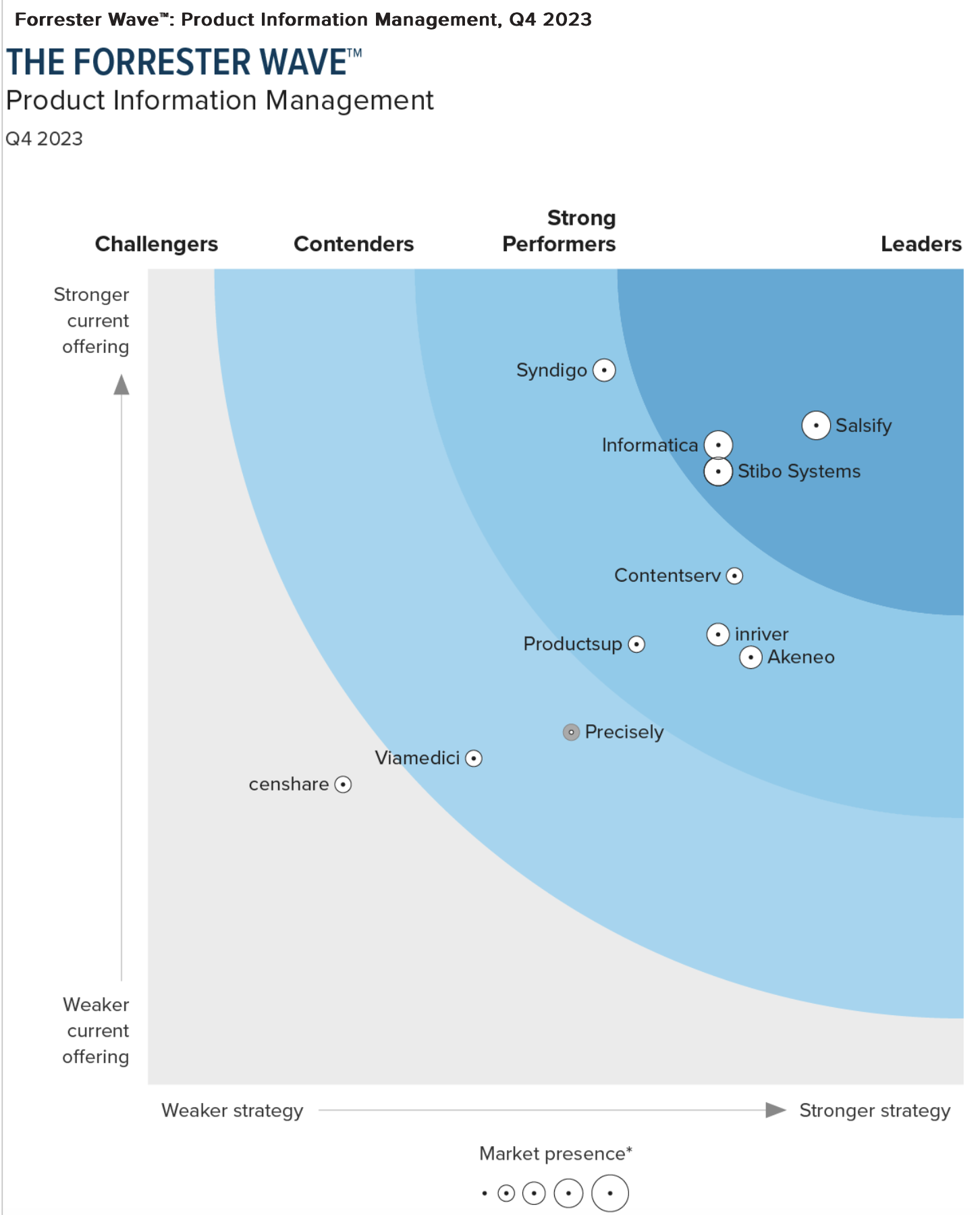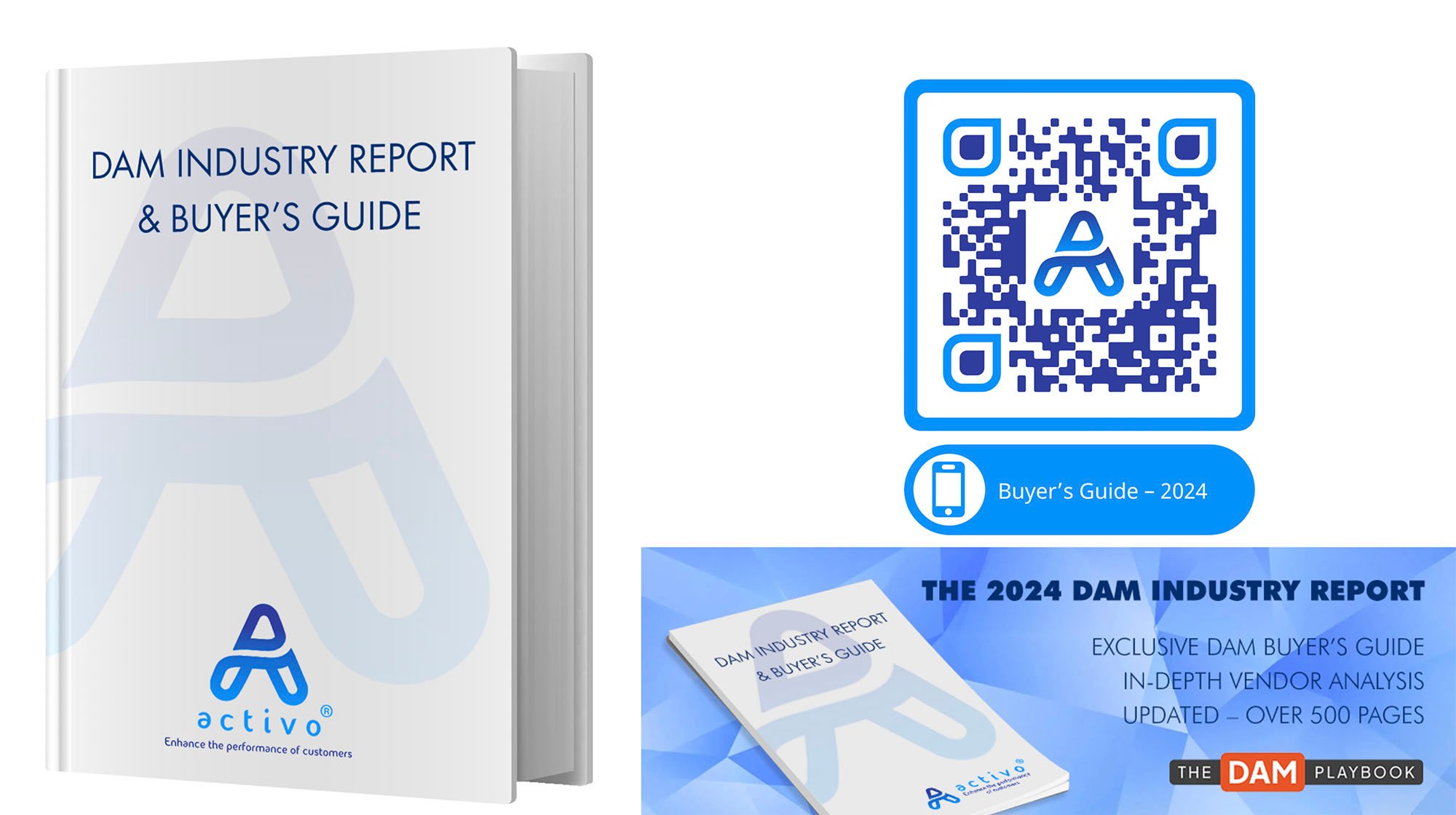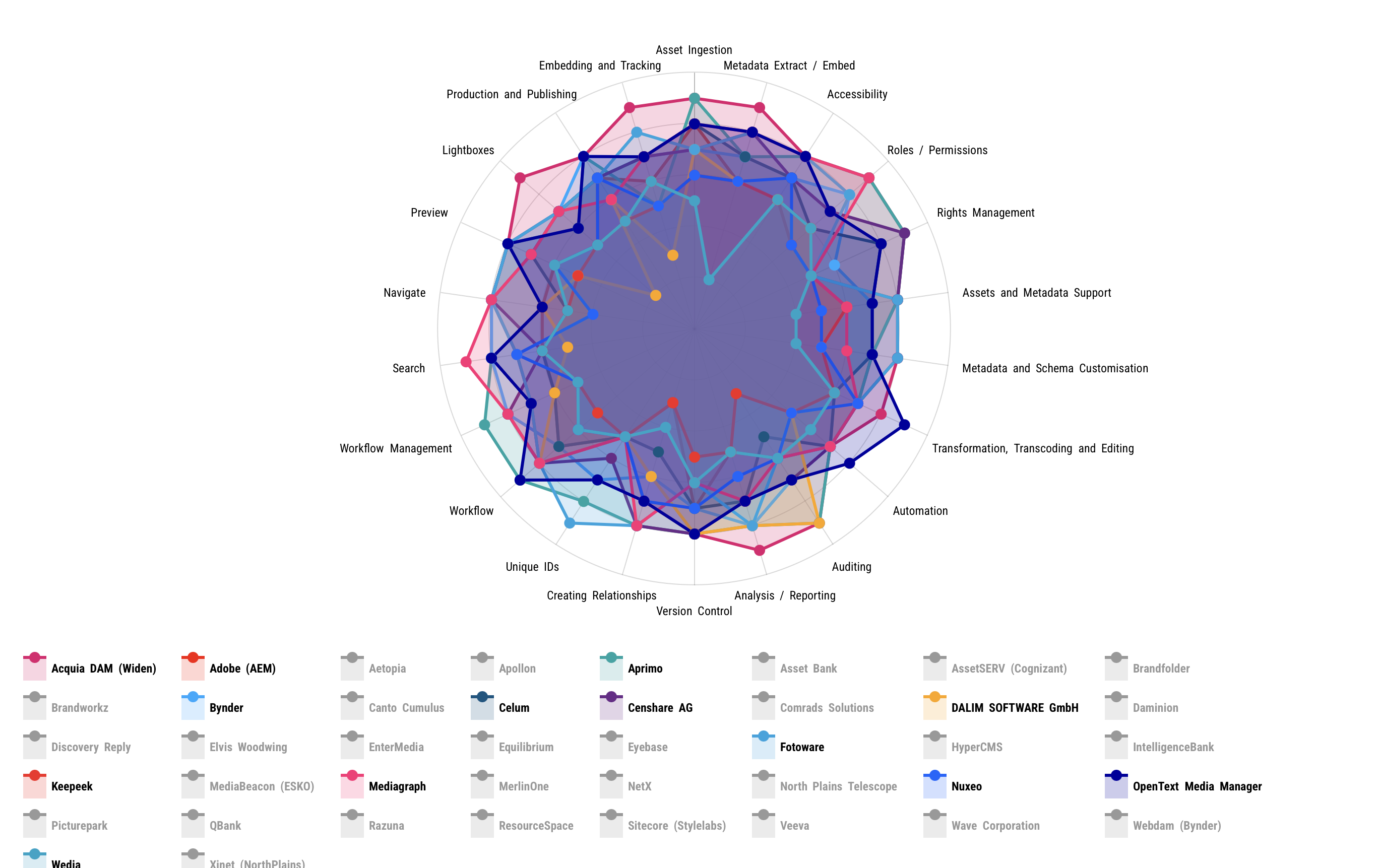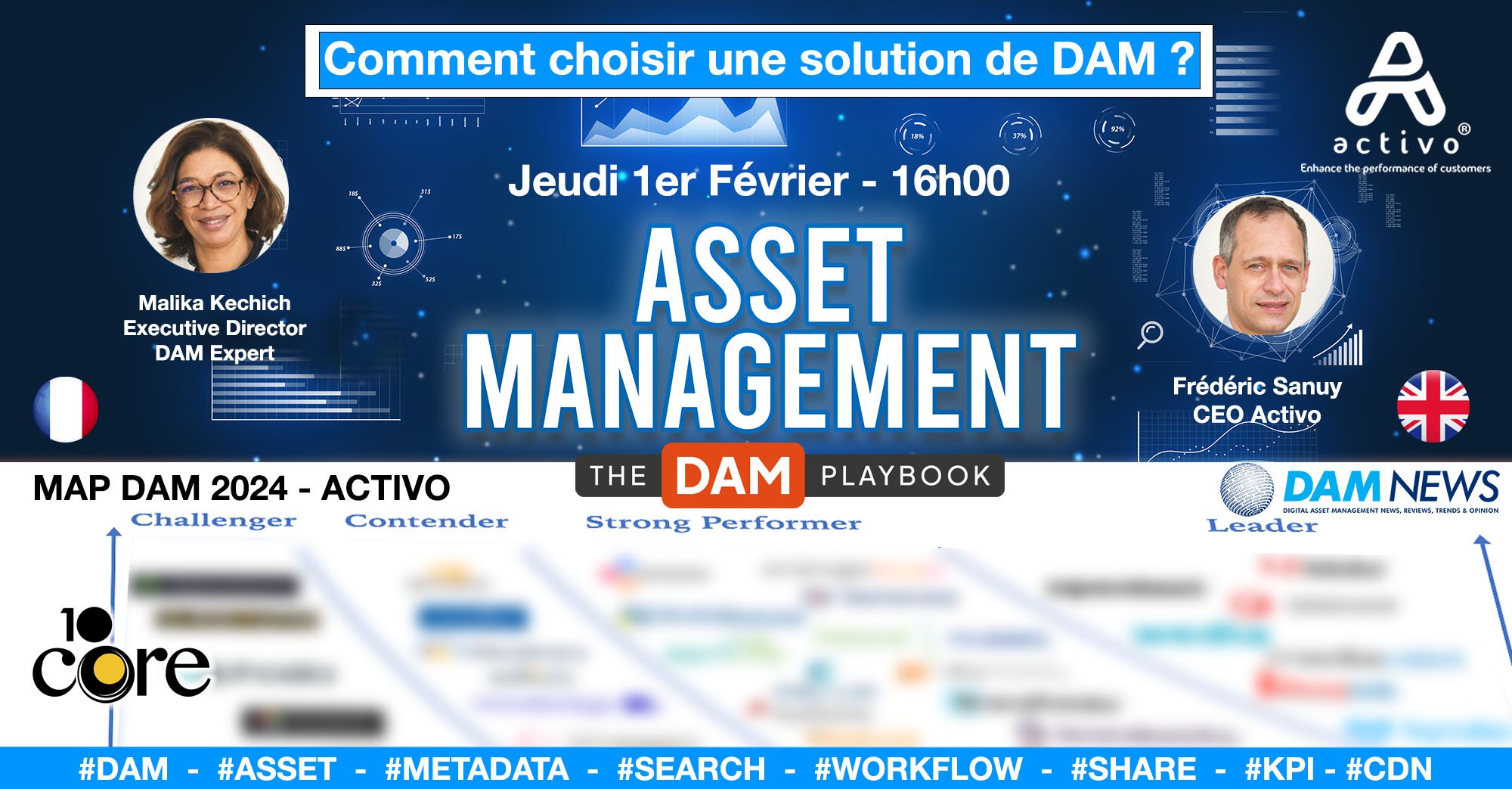Analysts all agree that the pandemic has been an accelerator of digital transformation, forcing clients to undertake DAM and/or PIM projects to meet the needs of their clients.
As Oberlo rightly analyzes, the penetration rate of e-commerce is constantly increasing.
In 2022, nearly 2.14 billion people around the world will shop online. This represents 27.6% of the world's population. In other words, more than one in four people are fans of online shopping. Between 2021 and 2022, online commerce gained 900 million more followers, an increase of 4.4% in one year.
Fevad has just published the latest figures for the second half of 2023: Results of e-commerce in the 2nd quarter of 2023: 39.3 billion euros in turnover: +8%
Many buyers who had never used e-commerce have discovered its advantages: the possibility of shopping from home, home delivery or even a safe way to buy, by limiting physical contact.
Added to this are events exclusive to online commerce with promotional offers and attractive discounts - such as Black Friday, Cyber Monday, Singles Day in China or even Amazon Prime Day - which have encouraged some consumers to take the train working.
In this context, more and more small businesses are turning to e-commerce, creating merchant sites with solutions like Shopify and offering options like click & collect. The digitalization of global trade is a real underlying trend!
The evolution has been spectacular between 2021 and 2022. According to Médiamétrie, there are 42 million online buyers in France, or 62% of the population. 16 million of them make purchases on smartphones, hence the importance of creating a responsive website. Certain population categories, such as those under 35, are mobile-first or even mobile-only.
1- DAM & PIM at the heart during OnDAM Paris 2023
During the last OnDAM Paris 2023 🇫🇷, we organized two customer cases on the DAM / PIM interaction with Michelin and Look. We offer you below the replay of these 2 conferences ✅
In the introduction we had the privilege of having the testimony of Patrice Cochin, Chief Digital Experience Officer at Michelin who was able to discuss a key element of digital transformation: 5% technology 95% human and processes!!
Indeed, people and exchange are essential to the implementation of PIM and DAM solutions in order to ensure governance of people and data.
With the AI revolution, each of us faces new responsibilities and must tackle important questions:
- How can we ensure that AI, the main driver of automation, is managed responsibly?
- How to emphasize job enrichment and the opportunity for employees to engage in more meaningful and creative activities?
- What criteria and considerations do we use to discern which tasks and processes are suitable for automation and which should remain under human control?
- How can we empower employees to take ownership of technology-driven projects and processes, fostering a sense of partnership with AI tools?
- How do we approach employee training and development to better leverage automation and AI technologies?
Then we had the pleasure of welcoming Niels Stenfeldt CEO inriver, an excellent communicator on the integration of technologies in business but also on the DPP ( Digital Product Passport ). The question of product durability is at the heart of all concerns. For years, consumers, governments and industry leaders have been talking about the need to conserve resources, find smarter production methods and make more responsible choices.
Like the travel passport, the digital product passport is a document that must accompany a product throughout its journey. It will bring together various data, ranging from the supply and extraction of materials necessary for manufacturing to the recycling of the product at the end of its life. It will be permanently affixed to each product in the form of an NFC chip, a QR code or an RFID label.
Data stored in the DPP:
- Basic product data: name, brand, model, batch number, manufacturing date and warranty information;
- Data relating to materials: origin of raw materials and components, name of suppliers involved in the supply;
- Ownership data: information regarding current and previous owners (especially for long-lived products, which may change hands several times);
- Repair data: information regarding the overall repairability of the product, as well as the specific repairs carried out and their causes;
- Sustainable development data: carbon footprint linked to manufacturing and distribution processes, and the use phase.
At the last World Economic Forum Microsoft CEO Satya Nadella said: “We need to take into account the unintended consequences of any new technology as well as all its benefits, and think about them simultaneously. »
Beyond technology that extends to all products and services, highlights the important role of #PIM in understanding and managing these consequences, Niels Stenfeldt CEO inriver
Needs :
- Know or create appropriate data governance before launching PIM/DAM projects
- Always have very flexible data models/tools to adapt quickly
- Have collaborative working methods within PIM/DAM
- Maintain POC mode before full alignment
Michelin has placed PIM/DAM projects within the Data Market Intelligence department to:
- Already a step into data governance discussions
- Have data analyst/data engineer resources
- Facilitate connection between systems
- Have a better knowledge of group data
- Have projects carried out in an agile manner (part of the digital exp. department)
- Close relationship with the AI team
The Michelin group continues to deploy and optimize data between the inriver PIM and the Wedia DAM, connected with SalesForce and Apostrophe v3 as headless CMS.
Watch the interview of Lucile Logel with inriver :
Another customer case with Look cycles and a single objective explained to us Yannick Hermant: Improve the product experience delivered to its customers and partners on its B2B and B2C channels.
Challenge: The group faces significant challenges in disseminating product information to its international customers and partners with Scaleflex such as DAM headless and the PIM Akeneo.
2- DAM vs PIM
The subject of DAM and PIM as well as their positioning in the business ecosystem is not recent and many articles have already largely addressed this duality. As a result of our experience, it nevertheless seemed necessary to highlight some fundamental areas that it is imperative to know before embarking on a DAM and/or PIM project. This is all the more true today with the profusion of solutions which often confuse the user.
It is important to remember the fundamentals for a good understanding of DAM and PIM:
2.1 What is a DAM system ?
- DAM (Digital Asset Management) is a system for organizing and classifying all digital assets (photos, videos, audios, documents, PDFs, 3D, etc.) and enriching them with metadata. The DAM is an engine for assets and metadata. That's the foundation. It must also be capable of processing any type of high definition file and ensuring this work regardless of the load requested by users.
By saying this, we unknowingly lay the foundations for eliminating a certain number of vendors from the market. Many solutions on the market do not allow processing all types of documents, especially the most complex ones such as certain Photoshop files, multi-page or packaging PDFs, not to mention 4K H265 video or 3D objects. Yet this is the reality that every brand faces.
As for metadata, we are often far from the mark. The basis of a DAM system is to be able to support any type of metadata (IPTC/XMP/EXIF standard) but also to offer the ability to personalize this information via a set of metadata sets in order to adjust the DAM to the business of every customer. And never forget one fundamental thing: you must have control of this metadata around a dedicated back office otherwise you will have to pay for each information update (and in the retail workflow the product information changes constantly)!! !
From this basis we can then consider professional management of the life cycle of your assets:
The new generation of DAM is enriched with workflow functionalities, or multiple connectors to facilitate its use among teams (Adobe CC, CMS, PIM, Social networks, etc.). The connector is not mandatory but greatly reduces integration costs. We talk about DXM, DAM 3.0, it doesn't matter as long as DAM is approached with its DNA as the engine of media and metadata.
2.2 What is a PIM system ?
PIM (Product Information Management) is a system for managing products. When we talk about "product" we must mention: a visual of the product as well as visuals in their context, a certain number of descriptive fields, their translations and of course, manage the syndication. In other words, being able to manage the distribution of this information on different communication channels (Website, e-commerce platform, social networks, etc.).
The PIM therefore acts as an aggregation of product information in the company's ecosystem (often complex with CRMs, CMS and DAM in parallel). I like to say that is a glue system at the heart of the ecosystem to gather and clean the data.
View PIM inriver
PIM AKENEO
Where the DAM database is centered around the media, the PIM database is centered around the product. This difference is important because beyond the technical aspects, it demonstrates the need to have a DAM and a PIM and not to succumb to the charm of the all-in-one which will only be a succession of frustrations for the customer, particularly in terms of performance.
PIM Quable
Based on our experience, we do not know of a PIM solution capable of managing the processing power of a DAM.
2.3 Benefits of a pur DAM player:
- Centralize all of your documents in a single location
- Effectively manage all of your media (very high definition photo and video)
- Easily find your documents, whatever their number, thanks to standard and personalized metadata (and without limits)
- Facilitate dissemination and internal-external sharing
- Share the right assets to the right people, advanced rights and permissions management.
- Manage associated rights (“no contract no photo”)
- Distribute the right media on the right medium, in the right format, to the right people, and at the right time
- Measure the performance and traceability of your media
"DAM" PIM inriver
Vue DAM Quable
Unfortunately we observe among many clients the use of Sharepoint as an aggregation of assets when it is not Dropbox or WeTransfert. In the case of Sharepoint, strongly anchored in the business ecosystem in France for 2 essential reasons:
- Easy navigation by folders. And yes, modern DAMs in "metadata driven" mode require such governance that few clients manage to manage their content easily or worse for users to easily find their media
- Finally Sharepoint allows you to personalize the Front Office by department or business entities, something that DAMs hardly do unless they are coupled with CMS.
The solution ? Strong governance and the establishment of a team of documentalists, DAM managers, project managers and product owners. It is at this price that DAM will be a success in the company, do not think that AI will solve your governance problems.
The best practice ever is to connect to a pur DAM player ( Bynder, Wedia, Acquia, Keepeek..for top performance and advanced image optimization.
2.4 Benefits of a PIM system :
- Model your data with flexibility to manage several brands and several data models.
- Aggregate all company data (CRM, Data lake, MDM, etc.)
- Enrich product data with other data sources
- Manage a product catalog via personalized portals (Brand Store, Shared catalogs, etc.)
- Syndicate the content of its products across the entire value chain (e-commerce, retail website, social networks, marketplaces)
- Use of AI (ChatGPT) to help with product completeness
- Dedicated DAM connector to ensure maximum performance.
- Optimize your SEO
- Measure the performance of these products and completeness via customizable dashboards.
- Automate your catalogs via the Easycatalog plugin or the Priint solution.
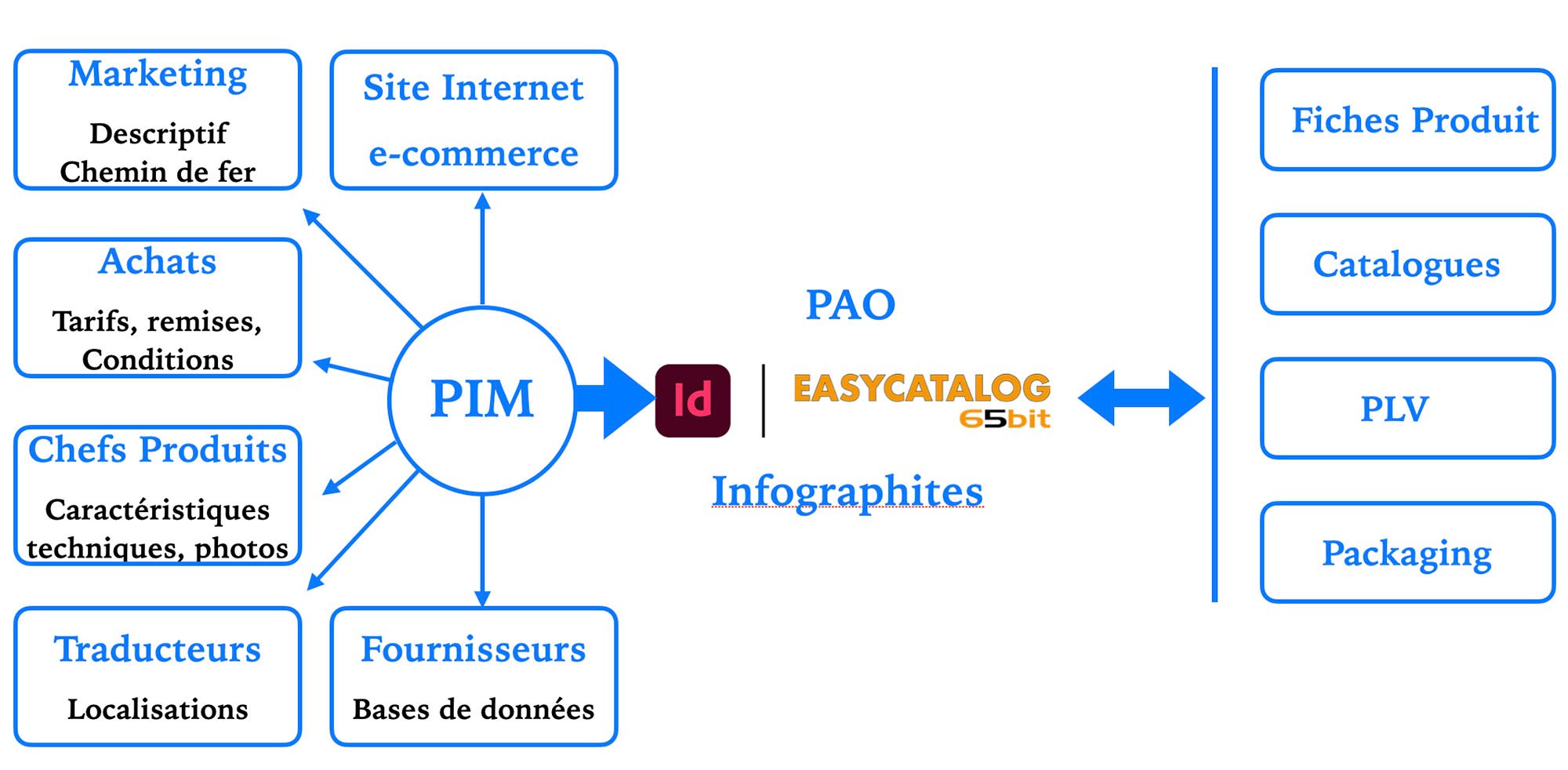
PIM solutions increasingly offer a large ecosystem of connectors between DAM, CRM, CDP, e-commerce, e-commerce tools, translation tools, syndication, etc.
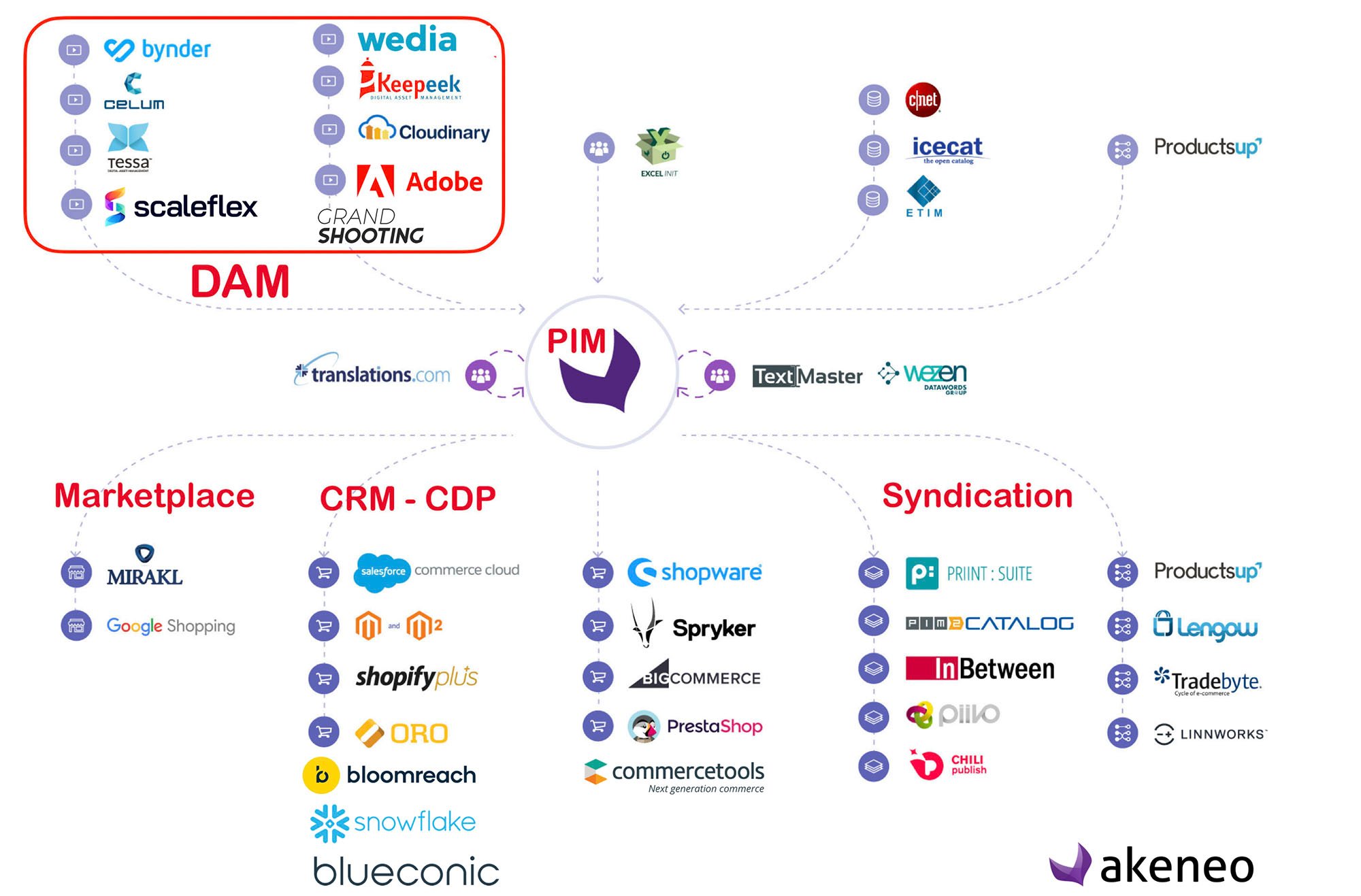
2.5 PXM ?
Product experience management (PXM) is the process of managing, selecting and optimizing a customer's entire experience with products, across all online touchpoints.
Part of the PXM process is creating a consistent product story across each channel. This ensures that customers always receive the same story wherever they find your products. This includes the same reliable product information, the same visual assets, the same specifications, etc. It also takes into account channel and market specifications, as well as ensuring a strong brand identity at every touchpoint.
PXM is the result of a streamlined product experience across all channels. A PXM solution relies on capturing accurate product information, typically from PIM software, to be able to deliver that experience across all relevant channels. With this information in place, the PXM solution can show how products arrive on each channel.
From points of sale to e-commerce, experience is essential when we want to attract and retain customers. According to Forbes, 73% of consumers say positive experiences are key to maintaining brand loyalty. So, ensuring that the product experience matches the buyer’s preferences can drive customer conversions.
Investing in PXM solutions is a real advantage. While 2021 saw approximately $5.2 billion in online sales, this figure is expected to reach a staggering $8.1 billion by 2026. E-commerce will only grow, and sellers that present a consistent and memorable online experience will be the most important. those who succeed.
2.6 Best practices
A very good representation of this DAM-PIM integration in the enterprise ecosystem is this diagram from the company Akeneo:
DAM as the foundation of your media, PIM as a data aggregator and content syndication across all communication channels, MDM as a data repository.
Good representation of the data life cycle in a PIM by inriver.
In terms of metadata strategy, break down silos and think about user experience! In a perfect DAM PIM integration, some best practices:
- Management of the name convention which can allow automation to feed your metadata into the DAM and PIM:
"GlobalID_Code-EAN_ProductName_Info_Dimension.extension"
- Share part of the PIM data model in the DAM, the latter often offering a better user experience for the user
- Manage validation workflows between DAM and PIM
- Presence of a content picker between DAM and PIM
- API in push mode between DAM and PIM - read - write
- SEO optimization
This e-retail workflow is aimed at all brands who wish to display their products from their website to e-commerce platforms with maximum performance, personalization and engagement always with a controlled ROI.
2.7 What about AI ?
Vendors like inriver or Akeneo (acquired UNIFAI) revealed their AI-related weapons in 2023, including the completion of product sheets via ChatGPT.
As you know, AI has made a lot of noise in 2023, particularly about generative AI, so it may be more difficult to understand how to use it for product management and the benefits it can bring.
AI in the context of PIM is about leveraging some of the most innovative technologies to innovate and create personalized product experiences.
- Improve workflow automation to avoid manual tasks.
- Improve content management, translations, product life cycle performance analysis in the scope of traceability.
- Improve the overall support of the platform.
2.8 Composable Commerce
Brands need to distribute optimized product data across all digital channels, but they also need to use performance insights to monitor these touchpoints and ensure they tell the product story customers want.
“The digital shelf” is the online environment where customers interact with your brands and products. This includes all digital touchpoints, such as product listings on retailer sites, search engines, social media and your own brand website. At these touchpoints, customers discover, inquire about, compare and purchase your products, or express interest offline at a point of sale. Whatever they do, it relies on the information they acquired on the digital shelf.
In order to win in the digital marketplace, it is essential for customers to create rich and engaging product detail pages across all your customer touchpoints. This should not only include all product specifications, media assets, and other content, but also meet all requirements of the host channel, whether a reseller or marketplace.
inriver launched DSA technology that uses software called “spiders” to crawl digital channels, the same way Google crawls the web for its search engine results. By crawling these sites, such as marketplaces, reseller channels, etc., these bots collect relevant information which is then relayed to update the user's KPIs.
3- Marketshare
Here is a view of the main PIM vendors on the market that we most often use for our clients and for which we also have strong business and technical expertise.
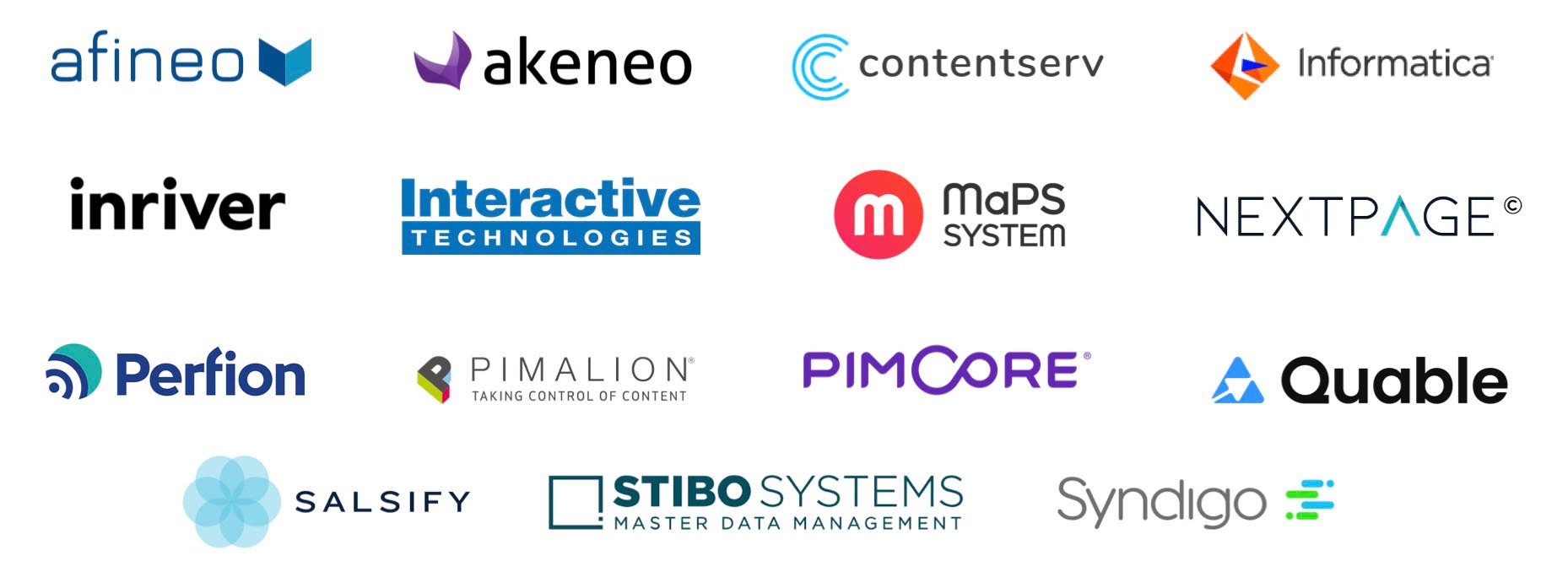
Here the last wave of Forrester Wave™: Product Information Management, Q4 2023
Since the last 2 years more and more vendors are joining the MACH Alliance.
To disciver some of them at MACH Alliance :
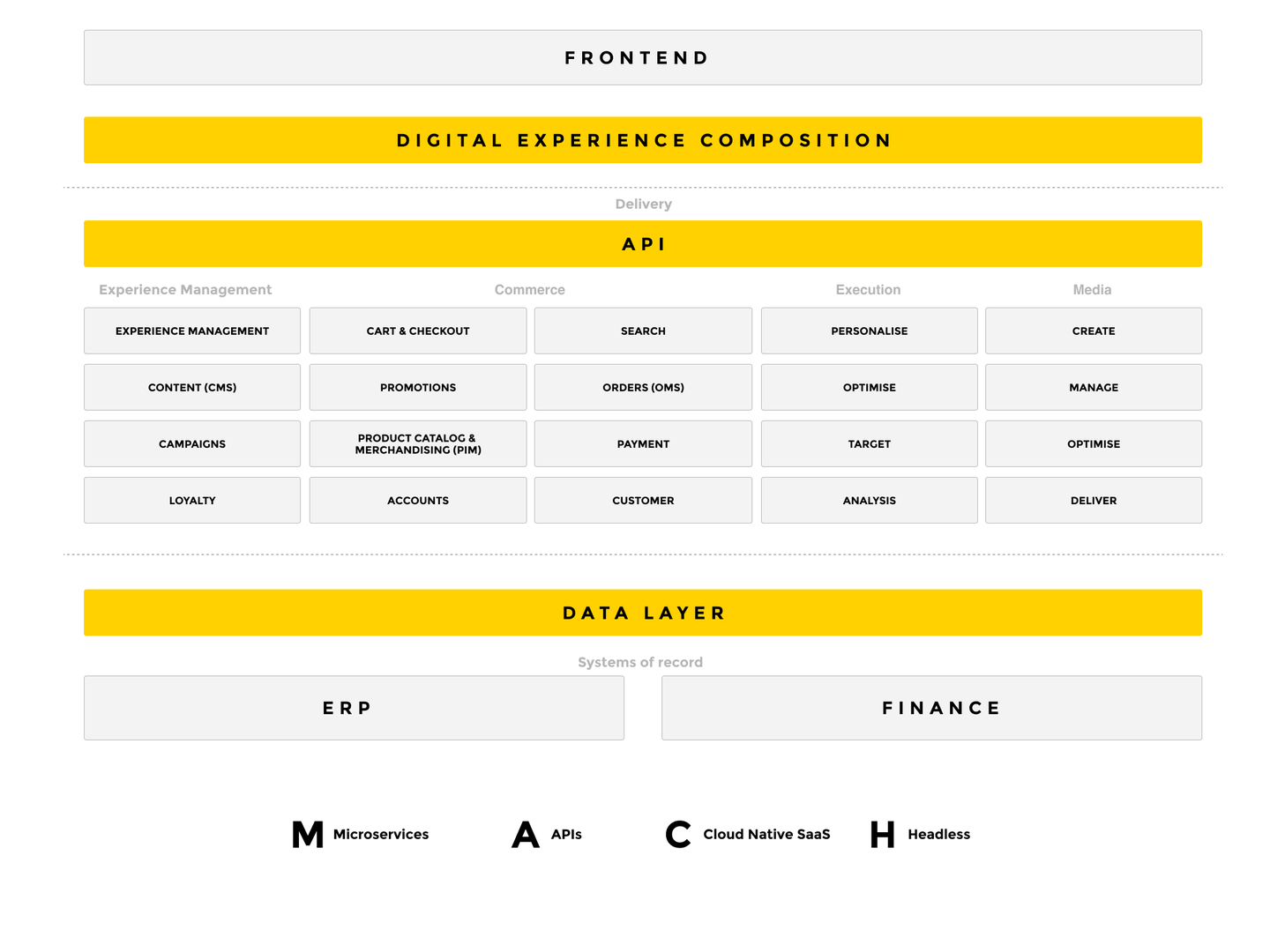
The choice will not be made only on the price but on the perfect cocktail that meets your expression of need. At this level, you, the customer, have a major role in implementing such solutions. As we often say, it's 5% technology and 95% human. Hence the importance of support from co-creation workshops, from definitions of needs to your expression of needs.
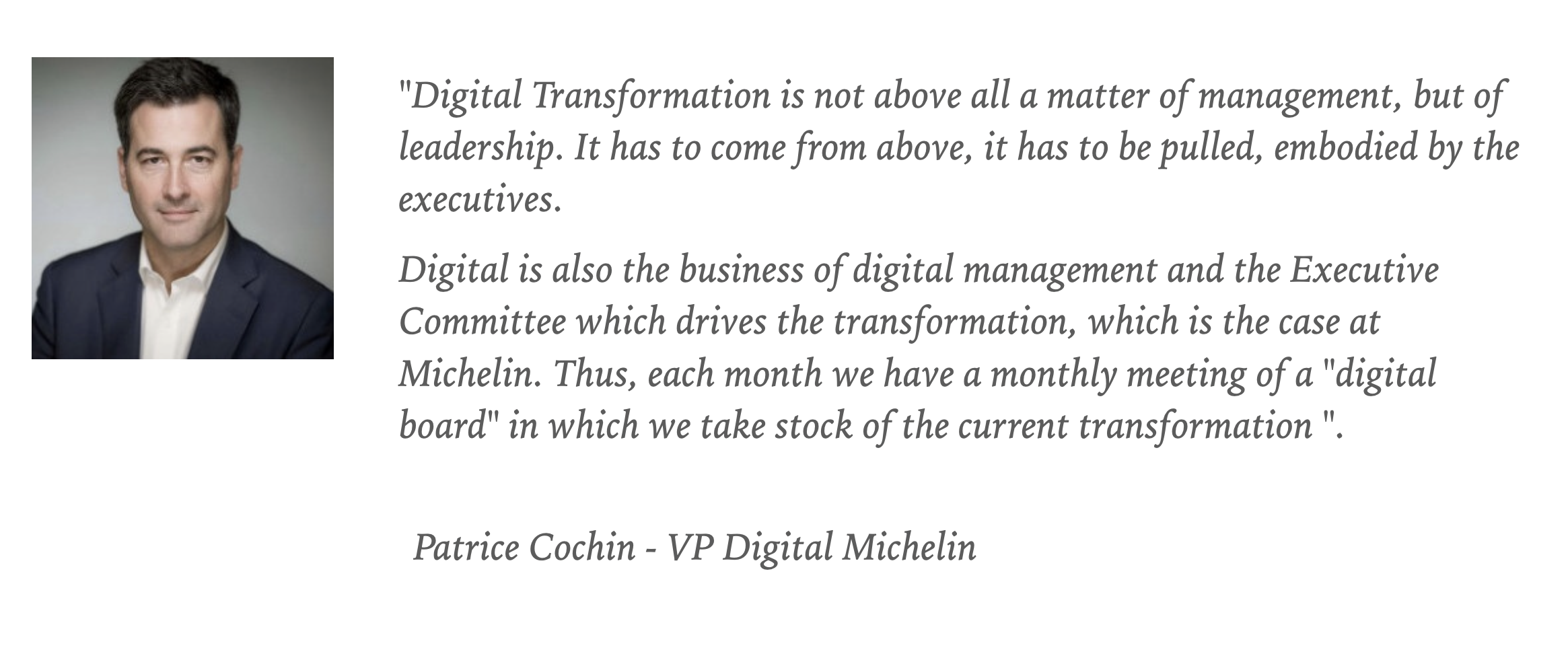
On the DAM and PIM side, our strategy is expressed in 6 steps:
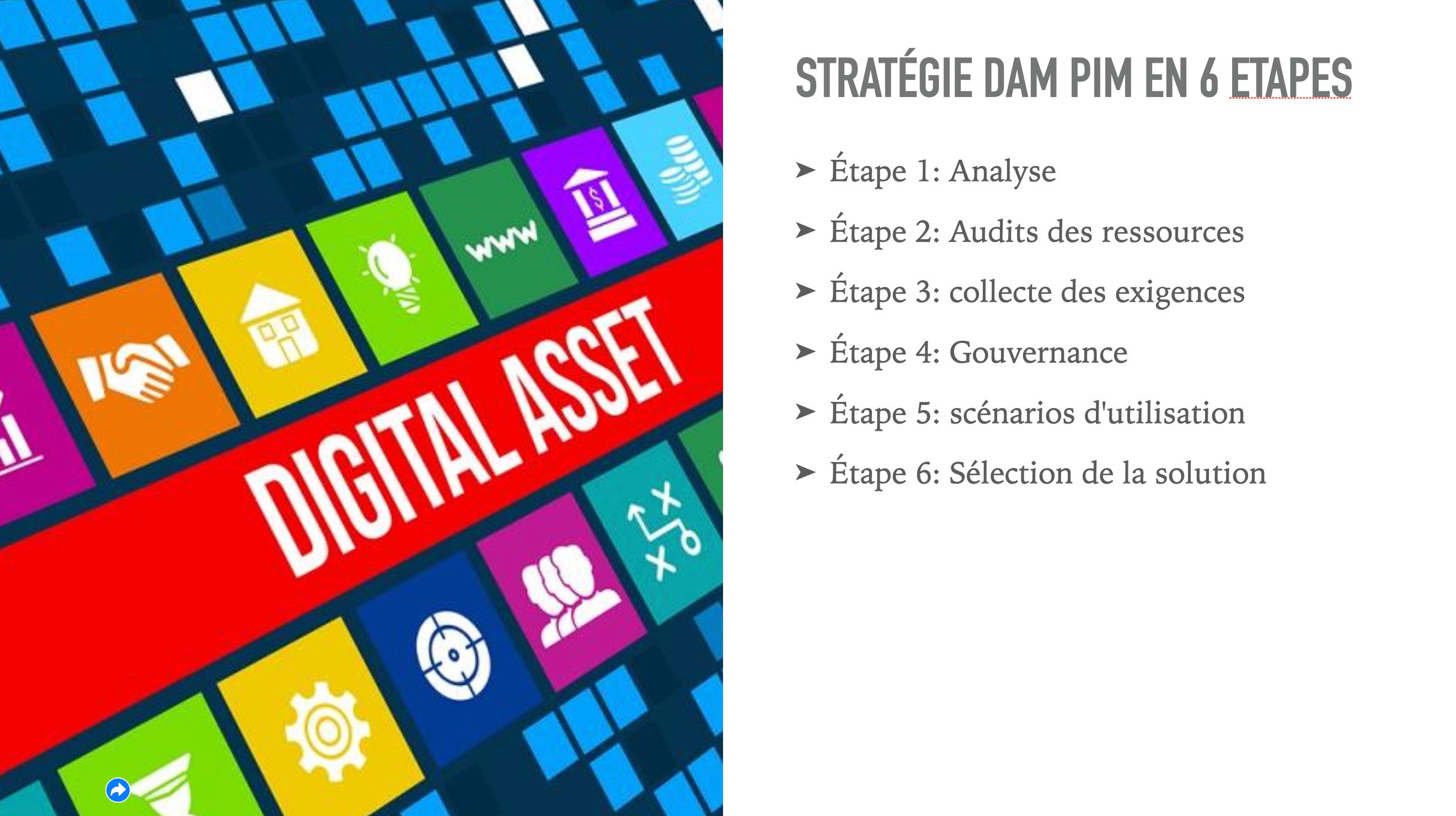
To find the right DAM solution corresponding to your needs, we have long done analysis work and real tests with THE DAM Playbook which we merged this year with DAM News thus bringing together the best knowledge base based on real tests the 10 characteristic cores.
A French version 🇫🇷 is coming fall June 2024 !!

This allows us to compare the capabilities of a DAM solution on nearly 22 dimensions?
We will share our insights and trends of DAM
nest Thursday 1st February 2024 at 4pm CET
With the updated Activo DAM Map 2024
Just few days after NRF and CES 2024 here are some of the best keynotes :
|
Siemens Keynote |
|
You have understood that DAM and PIM are at the heart of the publication of content for brands, but the choice is all the less obvious in recent years with the multitude of solutions and the promises of vendors.
Be disruptive in your choices, keep the expression of business needs at the heart of the value chain.
Finally, do not hesitate to contact us, our team of experts who have more than 20 years of experience will guide you with an agnostic and business approach in the right selection for an RFP, and solutions that perfectly integrate with your ecosystem with the best return on investment.
Activo®
Annexe :
- E-commerce : Statistics world and France by OBERLO
- Retail e-commerce sales worldwide from 2014 to 2026 par Statista
- Commerce composable par Akeneo
- What's is Digital Shell Analytics by inriver
- How to compose your commerce in 2023 by Commercetools
- The Forrester Wave™: Product Information Management, Q4 2023
- DAM & PIM Integration is Just the End of the Beginning by DAM NEWS
- PIM and DAM Emerge as Allies in Retail Compliance and Risk Management by DAM NEWS


